Tabo Monastery
Published on April 02, 2025
Nestled amidst the rugged and awe-inspiring landscapes of the Spiti Valley in Himachal Pradesh, India, Tabo stands as a testament to centuries of spiritual devotion and architectural brilliance. This quaint village, often referred to as the "Ajanta of the Himalayas," is home to the ancient Tabo Monastery—a sacred site that has captivated pilgrims, historians, and travelers alike for over a millennium. Founded in 996 AD by the revered Tibetan Buddhist monk Rinchen Zangpo, Tabo Monastery holds the distinction of being one of the oldest continuously functioning Buddhist monasteries in the world. Its enduring presence not only underscores its historical significance but also highlights its role as a vibrant center for Buddhist teachings, art, and culture.
The monastery’s architecture reflects an intricate blend of Indian, Tibetan, and Kashmiri styles, showcasing the confluence of diverse artistic traditions. Its walls are adorned with exquisite murals, frescoes, and thangkas (paintings on silk), which narrate tales from Buddhist scriptures and depict deities, bodhisattvas, and mandalas with remarkable detail. These artworks, some of which date back to the 10th century, have earned Tabo the reputation of being a repository of living Buddhist heritage. The monastery complex comprises several prayer halls, temples, and stupas, each exuding an aura of serenity and reverence.
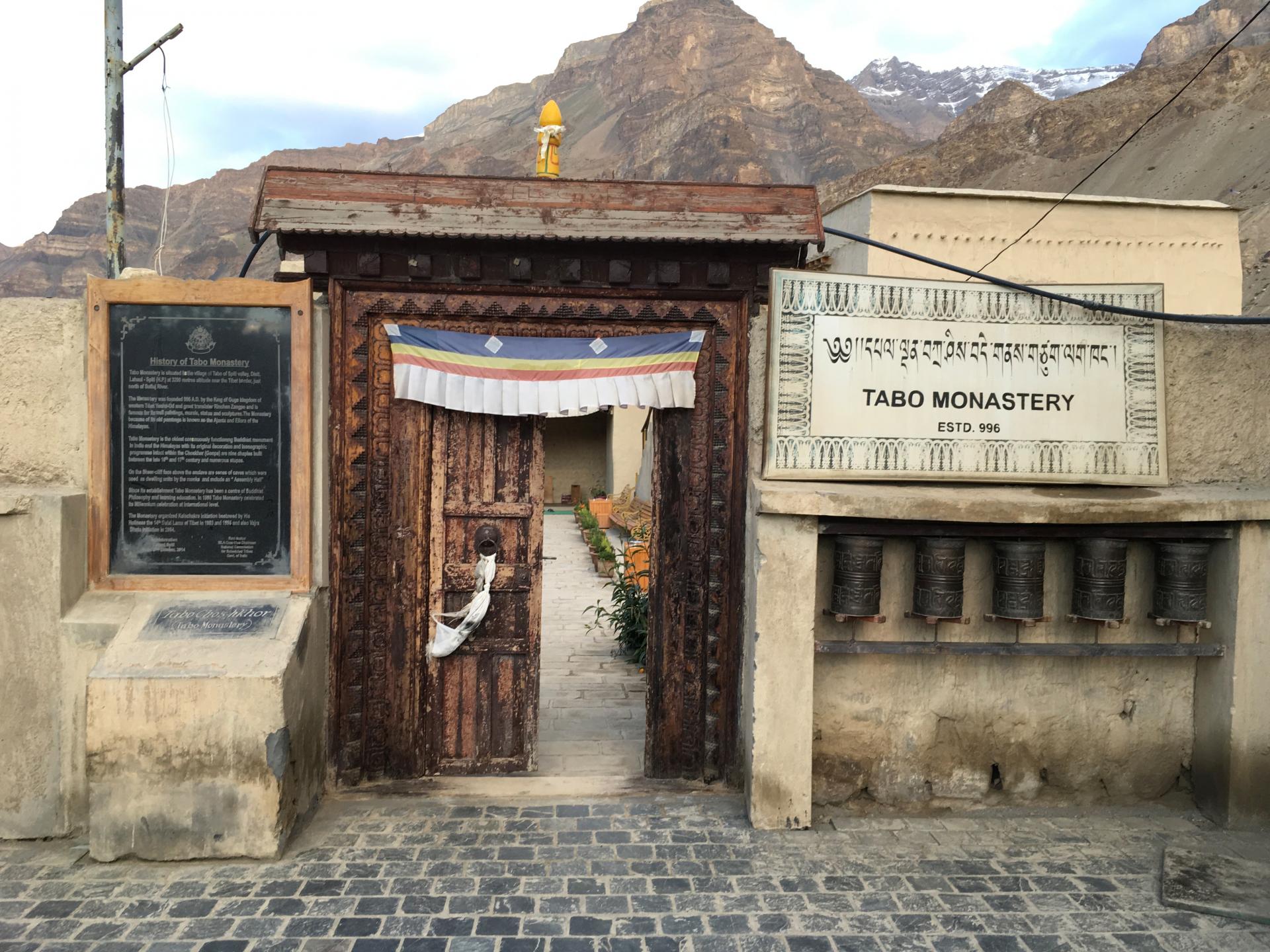
Beyond its religious and artistic importance, Tabo holds a unique place in the broader context of Himalayan history. Strategically located along ancient trade routes connecting Tibet and India, it served as a vital hub for cultural exchange and the dissemination of Buddhist philosophy. Scholars and monks traveling between these regions would often stop at Tabo to study, meditate, or engage in scholarly debates. This rich tapestry of influences has shaped Tabo into a microcosm of Himalayan spirituality and intellectual tradition.
Today, Tabo continues to draw visitors from across the globe, offering them a glimpse into a world where time seems to stand still. Whether it's the rhythmic chants of the monks echoing through the prayer halls, the vibrant hues of the murals illuminated by flickering butter lamps, or the stark beauty of the surrounding arid terrain, every aspect of Tabo resonates with a profound sense of peace and continuity. As we delve deeper into the multifaceted layers of this enchanting destination, it becomes evident that Tabo is not merely a historical relic but a living embodiment of faith, artistry, and resilience.
The Spiritual Heartbeat of Tabo Monastery
At the core of Tabo's identity lies its spiritual essence, embodied most profoundly by the Tabo Monastery. Often hailed as the 'Athos of the East,' this sacred sanctuary serves as both a religious retreat and a bastion of Buddhist education. The monastery's primary purpose has been to preserve and propagate the esoteric teachings of Vajrayana Buddhism, a tradition deeply rooted in the mystical practices of tantric rituals and philosophical inquiry. This spiritual mission is palpable in every corner of the monastery, where the air is thick with the scent of incense and the sound of monks chanting age-old mantras.
The daily life within the monastery revolves around rigorous spiritual practices. From the early morning prayers that begin before dawn to the evening rituals that conclude the day, the monks maintain a disciplined schedule steeped in meditation, scripture study, and communal worship. This routine is not merely about adherence to tradition; it is a pathway to enlightenment, aimed at fostering inner peace and wisdom. The monastery houses a vast library of ancient texts, including precious palm-leaf manuscripts, which are studied meticulously by scholars and novice monks alike. These texts cover a wide array of subjects, from metaphysical doctrines to practical ethics, all central to the Buddhist way of life.
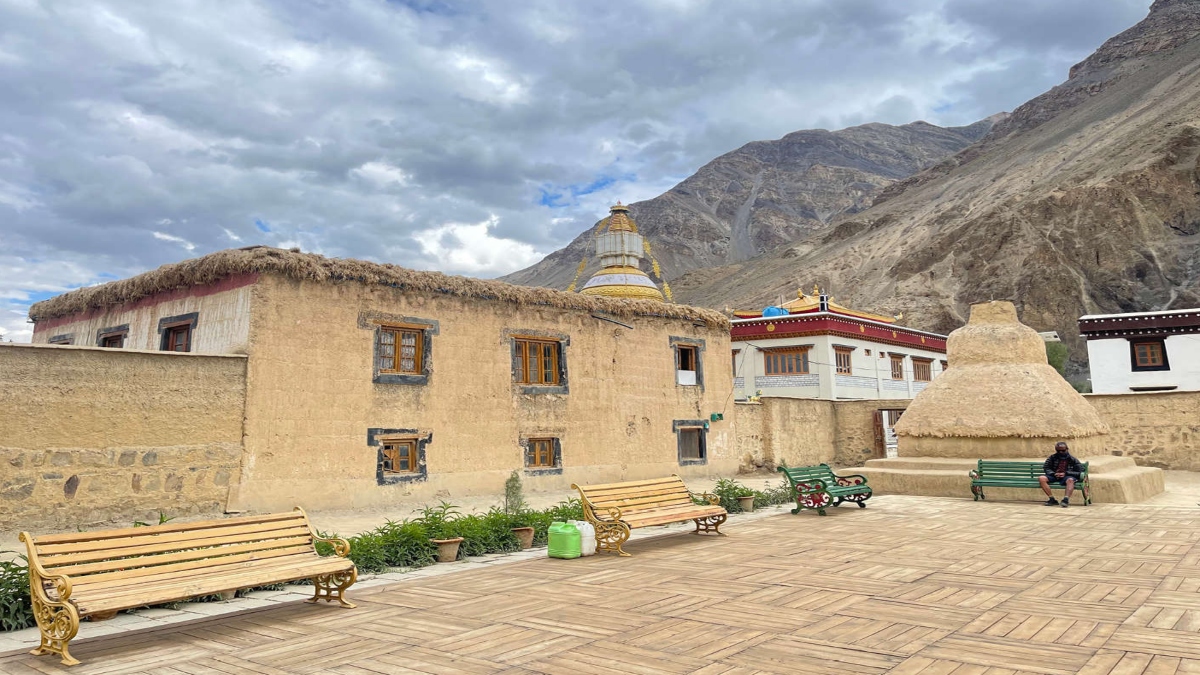
Tabo Monastery also plays a pivotal role in the broader Buddhist community. It hosts annual festivals and gatherings that attract devotees and scholars from various parts of the world. One such significant event is the Chakhar Festival, celebrated with great fervor, featuring elaborate rituals, masked dances, and music that encapsulate the spirit of Tibetan Buddhism. These festivals not only serve as a platform for cultural expression but also reinforce the bonds of community and shared belief systems among participants.
Moreover, the monastery acts as a spiritual guide for the local populace. The villagers consider it a moral compass, turning to its monks for counsel on matters ranging from personal dilemmas to community disputes. The advice dispensed is always imbued with the principles of compassion, mindfulness, and non-violence—core tenets of Buddhism. Thus, the influence of Tabo Monastery extends far beyond its physical confines, permeating the lives of those who dwell in its shadow and nurturing a society grounded in ethical living and mutual respect.
In essence, the Tabo Monastery is more than just an architectural marvel or a historical site; it is a pulsating heart of spiritual activity. It embodies the timeless quest for understanding and transcendence, making it a beacon of light and learning in the secluded corners of the Himalayas. As such, it remains an indispensable pillar of both local and global Buddhist communities, continuing to inspire and enlighten those who walk through its venerable gates.
Architectural Marvels of Tabo Monastery: A Testament to Artistic Genius
The Tabo Monastery is not merely a spiritual haven but also an architectural masterpiece that showcases the pinnacle of craftsmanship and design ingenuity. Spread across an expansive complex, the monastery consists of nine temples, each uniquely contributing to the overall aesthetic and functional harmony of the site. Among these, the Assembly Hall, known as the Du-khang, stands out as the largest and most significant structure, serving as the focal point for major religious ceremonies and gatherings.
The structural layout of the monastery is meticulously planned to reflect the Buddhist cosmology. The Du-khang, for instance, features a central square hall symbolizing the universe, surrounded by smaller chambers that represent different realms of existence. This architectural symbolism is further enhanced by the strategic placement of windows and doors, which align with celestial events, allowing natural light to illuminate specific areas during important religious festivals.
One cannot discuss the architectural brilliance of Tabo without delving into its artistic elements. The walls of the monastery are adorned with intricate murals that depict scenes from the life of Buddha, various Bodhisattvas, and detailed mandalas. These paintings, executed in vibrant colors derived from natural pigments, are not only visually stunning but also serve as visual scriptures, conveying complex Buddhist teachings and philosophies. The frescoes are particularly noteworthy for their preservation, with some dating back to the 10th century, offering invaluable insights into the artistic styles and techniques of that era.

Sculptures form another integral part of the monastery’s artistic repertoire. Carved from wood, stone, and metal, these sculptures range from small, delicate icons to large, imposing statues. Each piece is crafted with meticulous attention to detail, capturing the serene expressions and fluid drapery characteristic of Buddhist iconography. The main altar of the Du-khang, for example, houses a colossal statue of Vairocana, the cosmic Buddha, flanked by other deities, all intricately carved and painted.
The integration of art and architecture in Tabo Monastery is further exemplified by the use of space and light. The layout of the temples and the positioning of the artworks create a dynamic interplay of shadows and illumination, enhancing the spiritual ambiance of the spaces. The careful orchestration of these elements ensures that visitors experience a profound sense of tranquility and reverence, as they move through the corridors and halls, each step revealing new layers of artistic and symbolic depth.
In summary, the architectural and artistic components of Tabo Monastery are not merely decorative but are deeply intertwined with its spiritual and educational purposes. They serve as a conduit for the transmission of Buddhist teachings, creating an environment where art, architecture, and spirituality converge to foster enlightenment and understanding. This harmonious fusion makes Tabo not just a place of worship, but a living canvas that continues to inspire awe and contemplation among all who visit.
Tabo's Cultural and Historical Tapestry: Trade Routes and Intellectual Exchange
Tabo’s location within the Spiti Valley rendered it a critical juncture along the ancient trans-Himalayan trade routes, shaping its role as a nexus for cultural and intellectual exchange. Historically, these routes connected the high-altitude plateaus of Tibet with the fertile plains of northern India, facilitating not only the movement of goods such as wool, salt, and precious stones but also the flow of ideas, philosophies, and artistic traditions. This convergence of cultures left an indelible mark on Tabo, transforming it into a melting pot of influences that continue to resonate in its architecture, rituals, and societal structures.
One of the most significant impacts of these trade routes was the introduction of Tibetan Buddhist thought into the region. The merchants and caravans traversing the treacherous mountain passes often included monks and scholars who sought refuge or companionship in Tabo. Over time, these interactions led to the establishment of the monastery as a center for Buddhist learning and practice. The monastery’s libraries became repositories of sacred texts brought from Tibet, Nepal, and Kashmir, enriching the local intellectual landscape. This cross-pollination of ideas contributed to the development of a unique syncretic culture, blending indigenous traditions with imported philosophies.
Artistically, Tabo’s murals and sculptures reflect the eclectic influences borne from these exchanges. The vibrant frescoes within the monastery, for instance, exhibit stylistic elements reminiscent of both Indian and Tibetan schools of painting. The use of bold lines and intricate detailing mirrors the Pala art style prevalent in eastern India, while the depictions of deities and mandalas echo the iconographic precision of Tibetan thangka art. Similarly, the architectural motifs of the monastery, such as the ornate wood carvings and stupa designs, reveal traces of Kashmiri craftsmanship, underscoring the region’s historical ties with Central Asia.
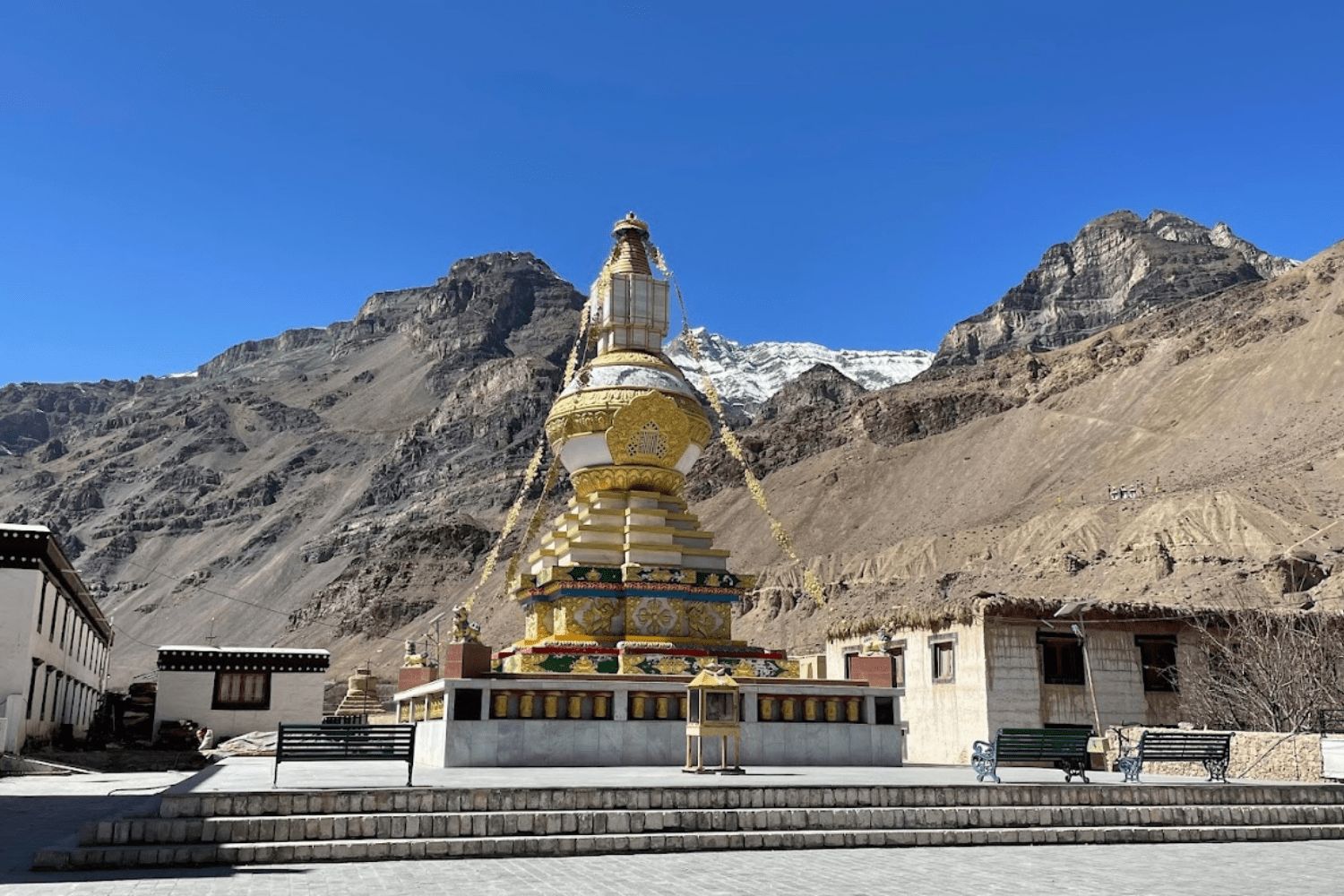
Culturally, the influx of diverse groups fostered a spirit of inclusivity and adaptability among the local population. Rituals and festivals observed in Tabo often incorporate elements from neighboring regions, such as the ceremonial masked dances inspired by Tibetan Cham performances or the incorporation of Himalayan folk music into religious celebrations. Even the local dialect spoken in Tabo bears linguistic borrowings from Tibetan and Sanskrit, reflecting centuries of sustained interaction.
The legacy of these trade routes extends beyond material artifacts and cultural practices; it also shaped the socio-political dynamics of the region. Tabo emerged as a diplomatic hub where emissaries from different kingdoms negotiated alliances and resolved disputes. The monastery itself played a pivotal role in these interactions, acting as a neutral ground for dialogue and conflict resolution. This function elevated its status not only as a spiritual center but also as a locus of regional stability.
In modern times, the echoes of this historical interconnectedness remain palpable. Tabo continues to serve as a bridge between cultures, drawing visitors and scholars eager to explore its rich heritage. The preservation efforts undertaken by local communities and international organizations underscore the enduring value of Tabo as a living archive of trans-Himalayan history. Through its art, architecture, and traditions, Tabo stands as a testament to the transformative power of cultural and intellectual exchange, a legacy that transcends time and geography.
Navigating the Depths of Tabo: Exploring Subterranean Sanctuaries
Beneath the sunlit courtyards and prayer halls of Tabo Monastery lies a realm shrouded in mystery—the underground chambers and caves that form an integral yet lesser-known facet of this sacred site. These subterranean spaces, carved into the rugged terrain of the Spiti Valley, have long intrigued archaeologists, historians, and spiritual seekers alike. Their discovery has unveiled a hidden dimension of Tabo’s history, offering tantalizing clues to its past while deepening our understanding of the monastery’s multifaceted role in the region.
The underground chambers of Tabo are believed to have served multiple purposes throughout history. Archaeological excavations suggest that these spaces were initially used as meditation retreats for monks seeking solitude and introspection. The cool, dimly lit interiors, insulated from the harsh Himalayan climate, provided an ideal environment for prolonged periods of spiritual practice. Some chambers feature small alcoves designed for seating, while others contain niches that likely housed sacred relics or ritual objects. These findings align with traditional accounts describing Tabo as a premier destination for ascetic practices, attracting practitioners from across the Himalayan Buddhist world.
Beyond their meditative utility, the underground spaces also functioned as storage facilities for valuable artifacts and provisions. Excavated remnants of grain silos, pottery shards, and metalwork indicate that these chambers were used to safeguard essential supplies during harsh winters or periods of political unrest. Additionally, certain chambers appear to have been designed specifically for the preservation of fragile items, such as manuscripts and thangkas, which required protection from sunlight and fluctuating temperatures. This dual functionality underscores the practical ingenuity of Tabo’s architects, who seamlessly integrated spiritual and utilitarian needs into the monastery’s design.
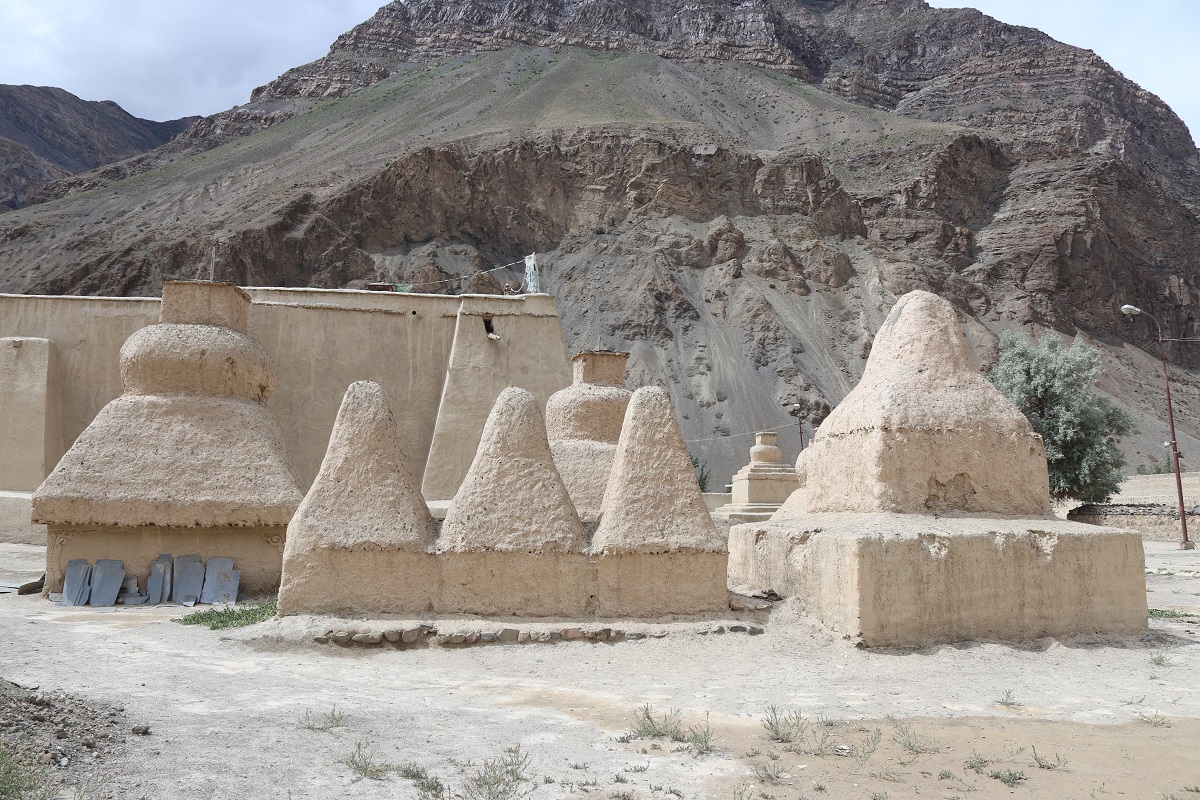
Among the most fascinating discoveries within these subterranean sanctuaries are the ancient murals and inscriptions adorning their walls. Unlike the vibrant frescoes found in the monastery’s main halls, these artworks are more subdued, rendered in earthy tones that blend harmoniously with the natural rock surfaces. The murals depict esoteric Buddhist symbols, guardian deities, and intricate mandalas, many of which are not visible elsewhere in the monastery. Scholars speculate that these images were intended for initiates undergoing advanced spiritual training, serving as visual aids for complex meditative practices. Inscriptions etched into the walls, written in archaic scripts, provide further insights into the linguistic and cultural evolution of the region, shedding light on the identities of those who once inhabited these spaces.
The exploration of Tabo’s underground chambers also reveals evidence of their role in the broader network of trans-Himalayan trade routes. Certain passageways connect the chambers to natural caves located outside the monastery complex, suggesting that these spaces may have been used as safe havens for travelers and traders during inclement weather or hostile encounters. Artifacts such as coins, beads, and fragments of textiles unearthed in these areas point to their occasional use as temporary lodgings for caravans passing through the valley. This dual function as both a spiritual sanctuary and a logistical waypoint underscores the strategic importance of Tabo within the larger socio-economic fabric of the region.
Modern archaeological studies have employed cutting-edge technologies, such as ground-penetrating radar and 3D mapping, to document and analyze these subterranean spaces. These tools have revealed previously unknown chambers and passageways, expanding our understanding of the monastery’s spatial organization. Moreover, ongoing conservation efforts aim to stabilize the fragile structures and protect the invaluable artifacts housed within, ensuring that future generations can continue to explore and appreciate this hidden treasure trove.
The underground chambers of Tabo Monastery thus represent a convergence of spirituality, practicality, and historical significance. They offer a window into the lives of those who walked these corridors centuries ago, providing a tangible connection to the past that complements the grandeur of the monastery’s visible architecture. As researchers continue to unravel the secrets held within these depths, the narrative of Tabo grows richer, highlighting its enduring legacy as a site of profound spiritual and cultural resonance.
Challenges and Resilience: Preserving Tabo's Heritage Amidst Modern Pressures
The preservation of Tabo Monastery and its surrounding cultural treasures faces a myriad of challenges, exacerbated by the relentless march of modernization and the ever-present threat of environmental degradation. One of the most pressing issues is the impact of tourism, which, while economically beneficial, poses significant risks to the fragile ecosystem and centuries-old structures. The increasing influx of visitors, although testament to the monastery's allure, places immense strain on its infrastructure. Foot traffic wears down ancient floors and pathways, while the demand for modern amenities introduces foreign materials that clash with the site's historical authenticity. Balancing the economic benefits of tourism with the imperative to preserve Tabo's pristine condition presents a daunting challenge for local authorities and conservationists alike.
Environmental threats loom equally large over this Himalayan gem. The Spiti Valley, characterized by its arid climate and severe weather conditions, is witnessing gradual changes attributed to global warming. Rising temperatures and erratic precipitation patterns threaten the structural integrity of the monastery’s mud-brick and stone constructions. Melting glaciers and altered river flows exacerbate erosion, destabilizing the very foundations upon which Tabo stands. Dust storms, increasingly frequent and intense, not only damage the exterior facades but also infiltrate the interiors, jeopardizing the delicate murals and frescoes that adorn the walls.
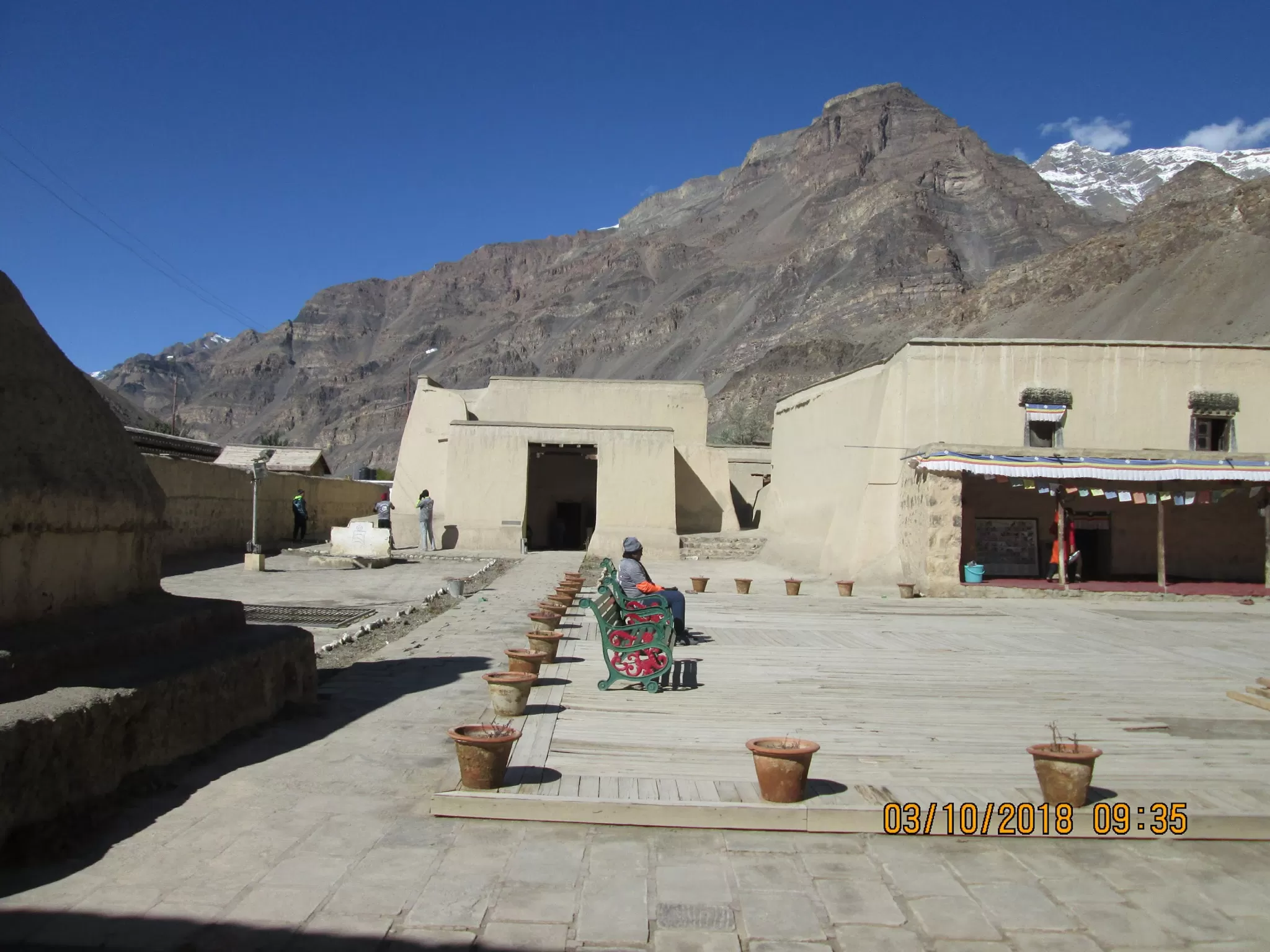
Efforts to mitigate these threats involve a combination of traditional knowledge and modern technology. Restoration projects, often funded by international organizations and supported by local communities, focus on reinforcing the structures using locally sourced materials and methods that align with traditional building techniques. This approach not only preserves the aesthetic and cultural integrity of the buildings but also respects the ecological balance of the region. Advanced technologies, such as drone surveys and digital documentation, are employed to monitor structural health and plan restorative interventions with precision.
Community involvement is pivotal in these preservation endeavors. Local residents, many of whom trace their ancestry back to the original builders of the monastery, play an active role in conservation activities. Educational programs and workshops raise awareness about sustainable tourism practices and the importance of preserving cultural heritage. By instilling a sense of ownership and pride, these initiatives ensure that the younger generation remains committed to safeguarding their ancestral legacy.
Despite these concerted efforts, the path forward is fraught with obstacles. Funding remains a perennial issue, with limited resources allocated to maintenance and restoration projects. Political instability and bureaucratic hurdles sometimes delay necessary interventions, leaving the site vulnerable to further deterioration. Nevertheless, the resilience of the Tabo community and the unwavering dedication of conservationists worldwide continue to drive progress. Each restored mural, each stabilized wall stands as a testament to the collective resolve to preserve this irreplaceable link to the past, ensuring that Tabo Monastery retains its status as a beacon of cultural and spiritual heritage for generations to come.
People Also Ask About Tabo
What is the historical significance of Tabo Monastery?
Tabo Monastery, founded in 996 AD by the Tibetan Buddhist monk Rinchen Zangpo, holds immense historical importance as one of the oldest continuously functioning Buddhist monasteries in the world. It has served as a vital center for Buddhist learning, art, and culture, preserving ancient traditions and scriptures for over a millennium.
Why is Tabo Monastery often called the "Ajanta of the Himalayas"?
Tabo Monastery is referred to as the "Ajanta of the Himalayas" due to its stunning murals and frescoes that adorn the walls of its temples. These intricate artworks, some dating back to the 10th century, depict Buddhist teachings, deities, and mandalas, making the monastery a living repository of Himalayan Buddhist art.
What architectural styles are reflected in Tabo Monastery's design?
The architecture of Tabo Monastery reflects a harmonious blend of Indian, Tibetan, and Kashmiri styles. This unique fusion is evident in its structural layout, mural paintings, wood carvings, and stupa designs, showcasing the rich cultural exchanges that occurred along ancient trans-Himalayan trade routes.
How does Tabo Monastery contribute to the local community?
Tabo Monastery plays a central role in the spiritual and social life of the local community. It serves as a moral guide, offering counsel on personal and communal matters, and hosts annual festivals like the Chakhar Festival, which strengthen cultural bonds and foster a sense of unity among the villagers.
What are the main structures within the Tabo Monastery complex?
The monastery complex comprises nine temples, including the Assembly Hall (Du-khang), which is the largest and most significant structure. Other notable features include prayer halls, stupas, and meditation chambers, each contributing to the monastery’s spiritual and educational functions.
How has Tabo Monastery been influenced by trade routes?
Located along ancient trans-Himalayan trade routes, Tabo Monastery became a hub for cultural and intellectual exchange. Merchants, monks, and scholars traveling between Tibet and India brought diverse artistic, philosophical, and religious influences, enriching the monastery’s heritage and shaping its development over centuries.
What challenges does Tabo Monastery face in terms of preservation?
Tabo Monastery faces threats from environmental degradation, such as erosion caused by climate change and damage from dust storms. Additionally, the increasing influx of tourists poses risks to its fragile structures and artifacts. Conservation efforts aim to address these challenges while maintaining the site’s authenticity.
Are there any hidden or lesser-known features of Tabo Monastery?
Beneath the monastery lie underground chambers and caves that have served as meditation retreats, storage spaces, and safe havens for travelers. These subterranean sanctuaries, adorned with ancient murals and inscriptions, remain relatively unexplored but offer fascinating insights into the monastery’s multifaceted history.
What role does Tabo Monastery play in modern Buddhism?
Today, Tabo Monastery continues to function as an active center for Buddhist teachings and practices. It attracts pilgrims, scholars, and tourists who seek to experience its spiritual ambiance, study its ancient texts, and participate in rituals and festivals that celebrate its enduring legacy.
How can visitors best experience the essence of Tabo Monastery?
Visitors are encouraged to immerse themselves in the serene environment of Tabo Monastery by exploring its temples, admiring its murals, and observing the daily rituals of the monks. Engaging with the local community and attending festivals provide deeper insights into the monastery’s cultural and spiritual significance.
